September 1, 2015
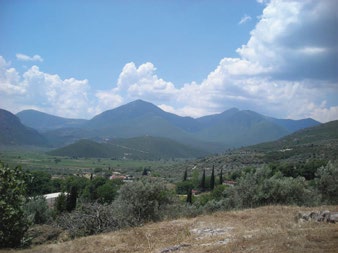
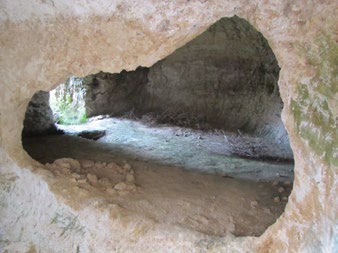
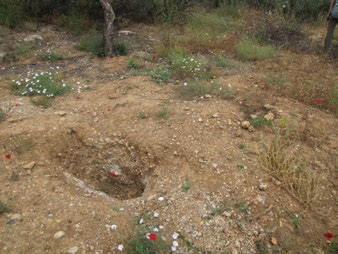
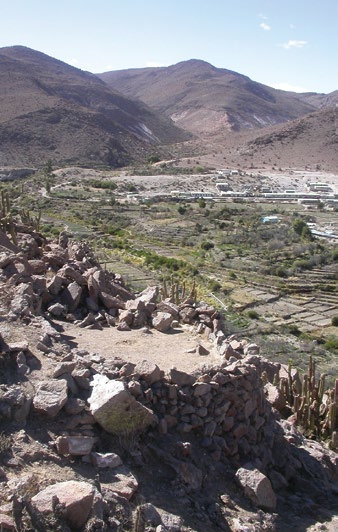
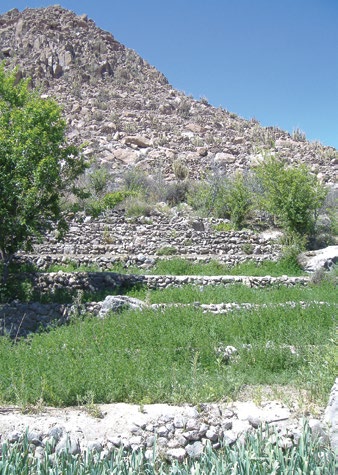


The Archaeological Institute of America awarded its most recent Site Preservation Grants to the Tombs of Aidonia Preservation, Heritage, and Exploration Synergasia (TAPHOS) in Greece and to the Project for the Preservation of the Pukara and Chullpas of Nama in Chile.
The archaeological site of Aidonia, located in southern Corinthia, Greece, includes several Late Bronze Age cemeteries dating from the fifteenth to thirteenth centuries b.c. One of these cemeteries, discovered in the late 1970s, includes at least 20 high-quality tombs comparable in design and construction to elite tombs uncovered at Mycenae. The Aidonia tombs contained a large quantity of burial goods and furnishings, including the famous “Aidonia Treasure.” Unfortunately, a majority of the tombs were looted in the 1970s. While some of the stolen materials have been returned to Greece, looting at the site has resumed and intensified in recent years.
The TAPHOS project, a cooperative effort between the University of California, Berkeley’s Nemea Center for Classical Archaeology (NCCA) and the Korinthian Ephorate of Antiquities of the Greek Ministry of Culture (EFAKor), under the direction of Kim Shelton (NCCA) and Giota Kassimi (EFAKor), is designing and implementing a program that will physically secure the site while providing education and outreach to the local community and beyond in an effort to increase awareness of the material destruction and loss of knowledge caused by looting. Shelton’s team will use the AIA grant to create a visitors’ center with exhibit and teaching spaces, design the materials for it, establish pathways and signage for visiting the site, train local staff, and establish and implement protocols that will provide long-term security.
The archaeological site of Nama, located in the TarapacЗ Sierra in Chile, contains the remains of a village with stone structures (pukara) and associated adobe funerary towers (chullpas) typical of the Late Intermediate Period (a.d. 950–1450) in the South Central Andes. Although the pukaras and chullpas are a vital part of the identity of both the ancient people that lived in the area and the modern Aymara community, the structures are deteriorating due to exposure and neglect. Current use of the area for agriculture and irrigation, along with the growth and development of the modern town of Nama, is adding to the threats to the site’s preservation.
Under the direction of Mauricio Uribe RodrТguez, associate professor in the Department of Anthropology at the University of Chile in Santiago, the AIA grant will be used to create, in consultation with the local community, a program that will conserve and protect the archaeological remains while reconnecting the current residents to their cultural heritage. The effort will include preservation of the pukaras and chullpas, creation of paths within the site, community workshops that inform local residents of the threats to the site and offer strategies for addressing them, the launch of a local heritage office managed by the Aymara Community of Nama, the development of an archive for materials related to Nama and the site, and the dissemination of information about the site and its significance to schools, local community members, and visitors.
Since 2008, the AIA Site Preservation Program has given grants and awards to 28 projects around the world. While these projects vary in terms of scope, cost, and cultural region, they have one important similarity—each project combines conservation with robust outreach and education initiatives that inform people about the significance of the sites and the need for long-term sustainable preservation. To read more about the AIA Site Preservation Program and the projects it supports, visit archaeological.org/sitepreservation.
 International Archaeology Day (IAD) is approaching and we invite you to be a part of this rapidly growing global celebration of archaeology. Last year, over 100,000 people participated in IAD events around the world. Host an event or attend one near you. If you do host an event, make sure to join the AIA as a Collaborating Organization and list your event on the IAD calendar. For more information and to find out how you can be a part of IAD 2015, visit archaeologyday.org.
International Archaeology Day (IAD) is approaching and we invite you to be a part of this rapidly growing global celebration of archaeology. Last year, over 100,000 people participated in IAD events around the world. Host an event or attend one near you. If you do host an event, make sure to join the AIA as a Collaborating Organization and list your event on the IAD calendar. For more information and to find out how you can be a part of IAD 2015, visit archaeologyday.org.
The Archaeological Institute of America (AIA) and the Society for Classical Studies (SCS) invite you to their 117th Joint Annual Meeting, January 6–9, 2016, in San Francisco. The Annual Meeting brings together more than 3,000 professional and vocational archaeologists and classicists from around the world and nearly every state in the United States to share the latest developments from the field. This well-attended conference is the largest and oldest established meeting of archaeologists and classical scholars in North America. The Annual Meeting has grown tremendously over the past decade, not only in attendance, but also in the scope of papers presented, demographics of attendees, and focus on professional development, cultural heritage management, new technologies, and other topics of critical importance to the field. To find out more about the 2016 AIA-SCS Joint Annual Meeting, visit archaeological.org/annualmeeting.
The AIA’s newest scholarship, established in honor of AIA Past President Elizabeth Bartman, assists graduate students or those who have recently completed a master’s degree with the expenses associated with participating in a museum internship either in the United States or abroad.
The AIA Museums and Exhibitions Committee is pleased to announce the first recipients of the Elizabeth Bartman Museum Internship Fund scholarship: Ana Abrunhosa, who received her M.A. (2012) and B.A. (2010) in archaeology from the University of Porto in Portugal, and Sarah Kate McKinney, a graduate student in applied anthropology at Mississippi State University. Each will receive $2,375 to help cover expenses associated with undertaking a museum internship.
McKinney will spend eight weeks in the Department of Invertebrate Zoology at the National Museum of Natural History at the Smithsonian Institution. She will examine the biology of mussels as she prepares to study the differences between prehistoric and modern mussel shell assemblages along the upper Tennessee River, and will also curate a large mollusk collection at the museum.
Abrunhosa will intern in Spain at the Museo ArqueolЧgico Regional de la Comunidad de Madrid. She will catalogue a large collection of lithic artifacts from the Pinilla del Valle Middle Paleolithic site and assist with the Pinilla del Valle summer field campaign of 2015. The internship will give her an opportunity to work directly with materials she plans to use in further Ph.D. research.
The next application deadline for the Elizabeth Bartman Museum Internship Fund is April 1, 2016. To read about this and other AIA funding opportunities, please visit archaeological.org/grants.
The 120th year of the AIA Lecture Program begins in September, when it will become the Institute’s longest-running public outreach effort. Each year the Institute sends outstanding scholars from around the world to present lectures on a wide variety of topics at AIA Local Societies across the United States and Canada. Whether giving a presentation on Kublai Khan’s lost fleet, Viking longships, Maya murals, Roman arenas, Stonehenge, or, as in the case of Norton Lecturer Stephanie Dalley, the hanging gardens of Babylon, AIA lecturers bring the world of archaeology vividly to life. As the number of AIA lecturers grows, so does attendance. Last year, more than 26,000 people attended AIA lectures. The lectures are an important benefit provided by the AIA to its members and Local Societies. They are also one of the primary outreach tools employed by many of our Societies to bring archaeology to their communities. For more information and schedules, visit archaeological.org/lectures. The Lecture Program, like most AIA programs, is supported by your gifts. To pledge your support for the program, call 617-353-8709.
Each year the AIA offers fellowships and grants for travel, study, and publication to deserving scholars and students. To read more about the scholarships and grants and their application guidelines and requirements, please visit archaeological.org/grants.
For details and information on how you can support archaeological research and fieldwork, please call 617-353-8709 or visit www.archaeological.org/giving.